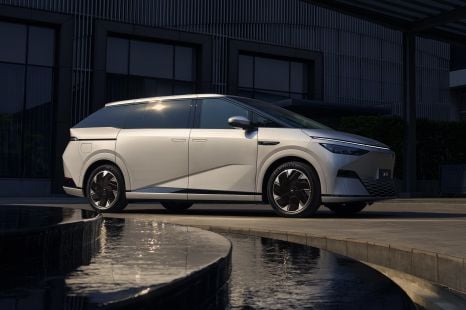

William Stopford
Will 2026 be the year of the people mover in Australia? China seems to think so
5 Minutes Ago
It's Japan meets Europe in this latest mainstream v premium duel. The top-spec Mazda 3 Hatch takes on the base A3 Sportback, both with mild-hybrid tech.

Marketplace Editor


Marketplace Editor
Passenger cars (as opposed to SUVs) may not be the sales powerhouses they once were, but that doesn’t mean competition isn’t as hot as ever.
Take the small car class, which was once the most popular vehicle segment. Two of the most recognised nameplates from this size class across the mainstream and premium segments respectively are the Mazda 3 and Audi A3.
Both of these small hatchbacks were once the golden children of their respective brand line-ups, at least until their SUV equivalents came in and stole the show more recently.
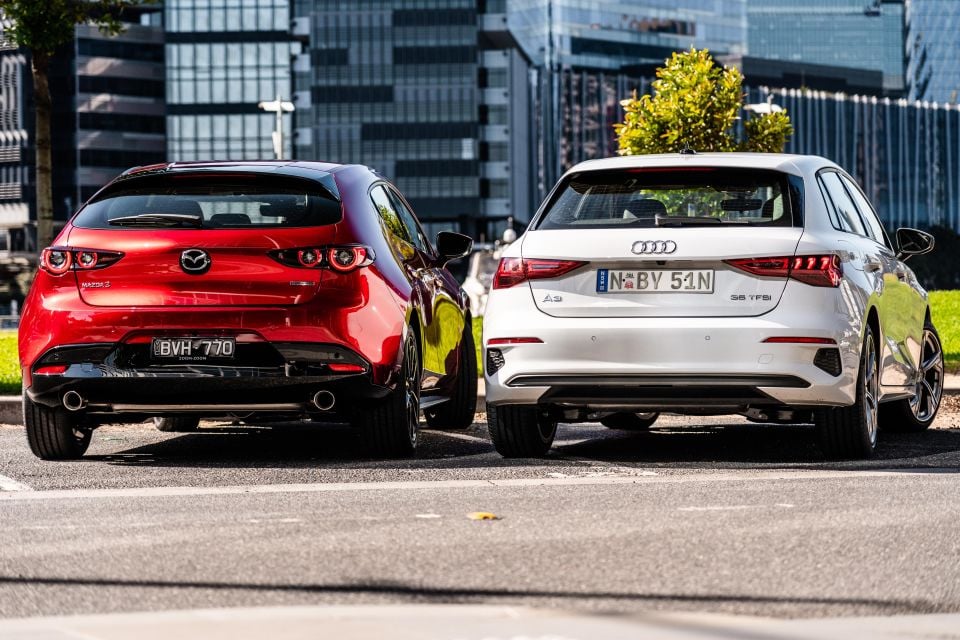
Why have we matched these two up? Well we have the most expensive Mazda 3 against the most basic Audi A3 to see if the Japanese brand’s push upmarket has resulted in a vehicle worthy of consideration against entry-level premium rivals.
Both vehicles have mild-hybrid systems, both offer impressive levels of technology, and both are priced in the $40,000-50,000 bracket. They’re a lot more alike than you might think.
Without further ado, here’s the 2022 Audi A3 Sportback 35 TFSI v Mazda 3 X20 Astina hatch – game on!
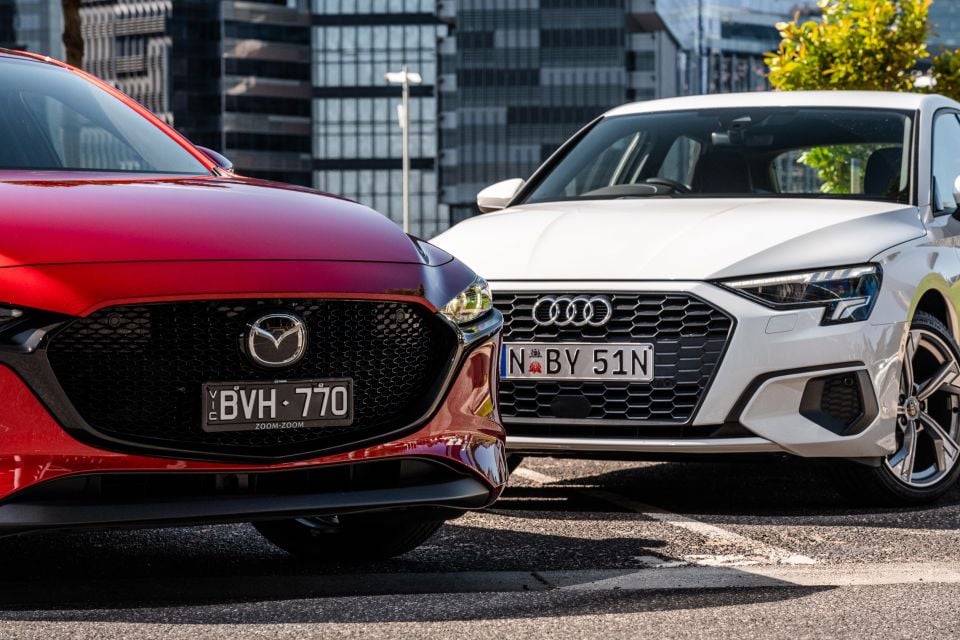
The Audi A3 Sportback 35 TFSI is priced from $46,900 plus on-road costs, while the Mazda 3 X20 Astina hatch lists for $42,690 before on-roads, giving the Mazda a $4210 advantage from the get-go.
If we were comparing the sedan versions of these vehicles, the Audi would charge a heftier $49,400 such is the German brand’s pricing structure for the A3 line, while Mazda has the 3 hatch and sedan priced identically.
Our Audi test vehicle came with a couple grand’s worth of options, including the lovely 19-inch Audi Sport alloy wheels seen here ($1500) and Glacier white metallic paint ($1250). That would bring the as-tested price to $49,650 before on-roads, though the current unavailability of a wireless smartphone charger brings a $260 discount to $49,390 as tested.
Meanwhile, the Mazda packs pretty much everything as standard, as there are no options or option packages from an equipment perspective, however our test vehicle’s beautiful Soul Red Crystal metallic paint commands a $595 premium – so you’re looking at $43,285 plus on-road costs as tested.
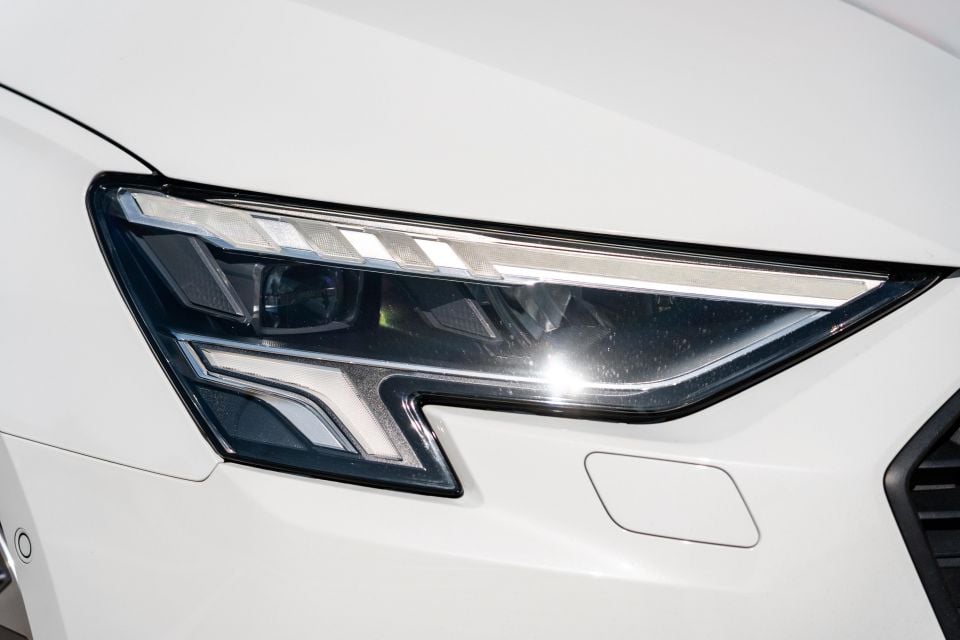
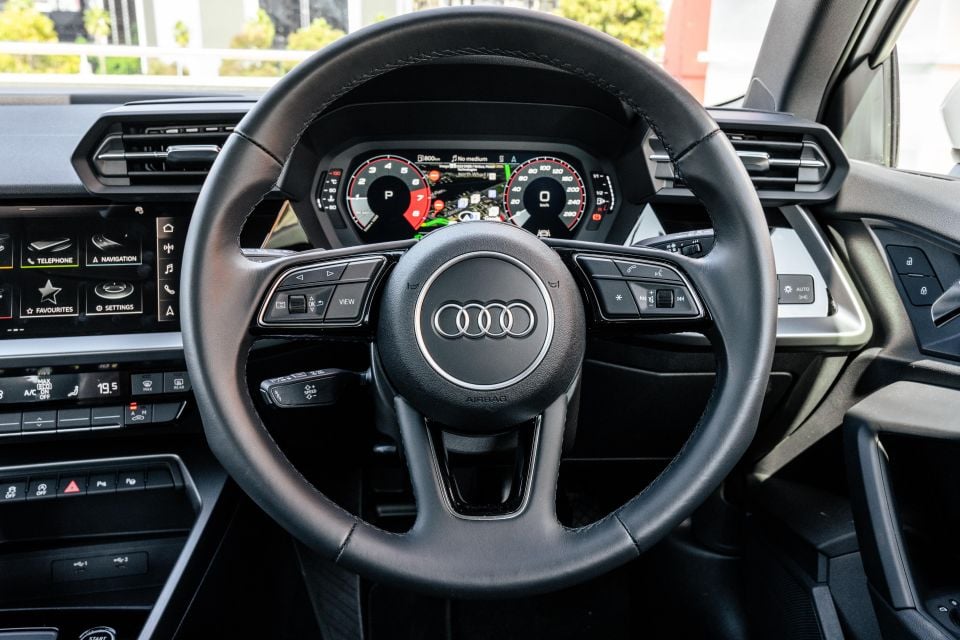
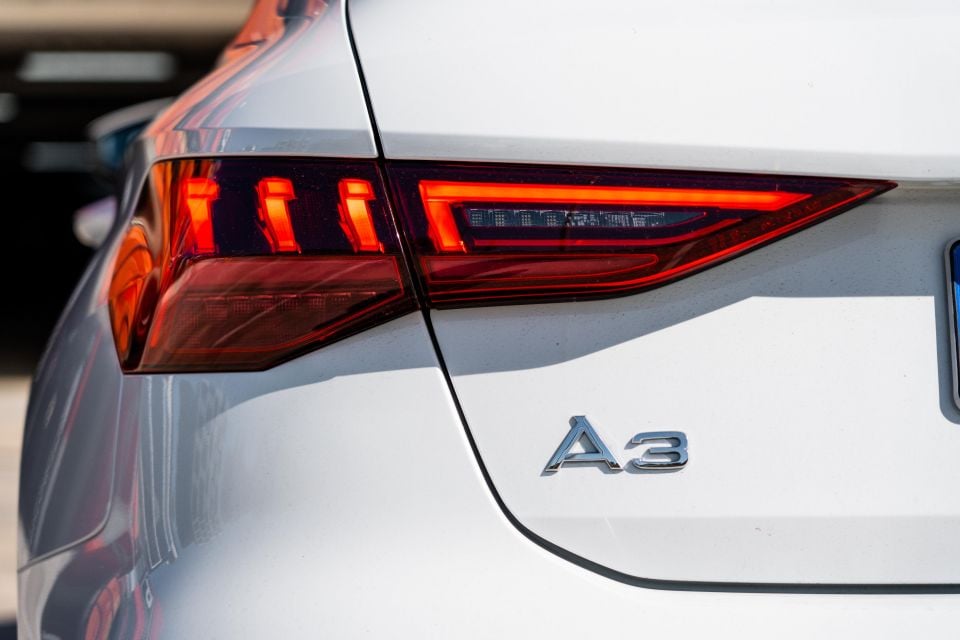
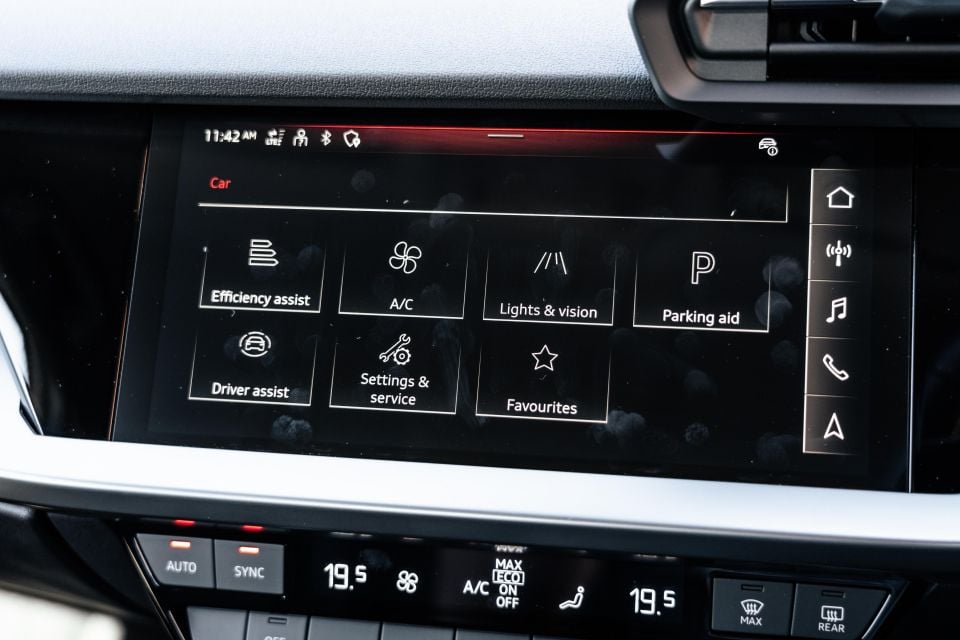
A3 35 TFSI highlights:
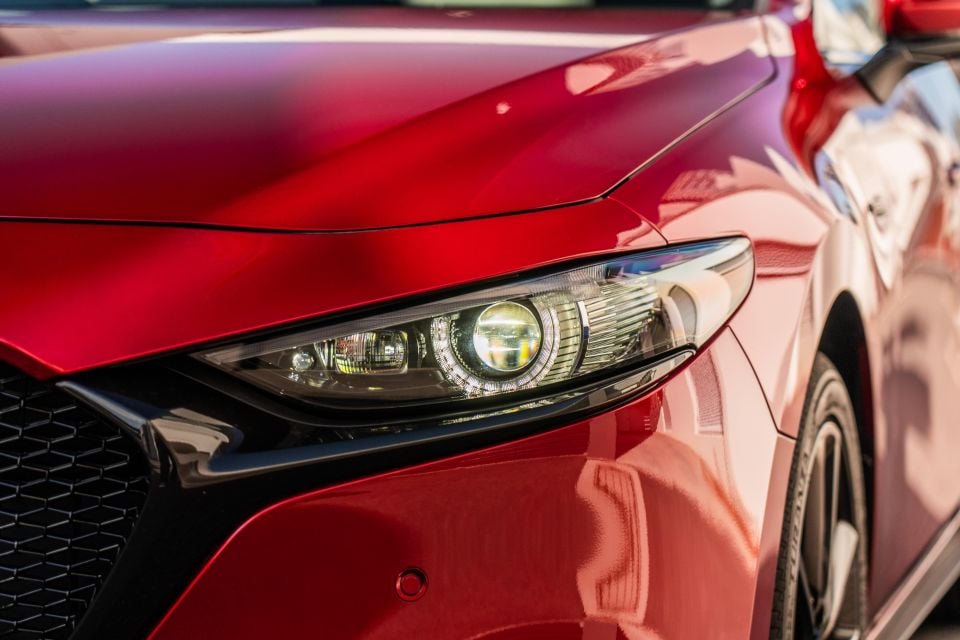
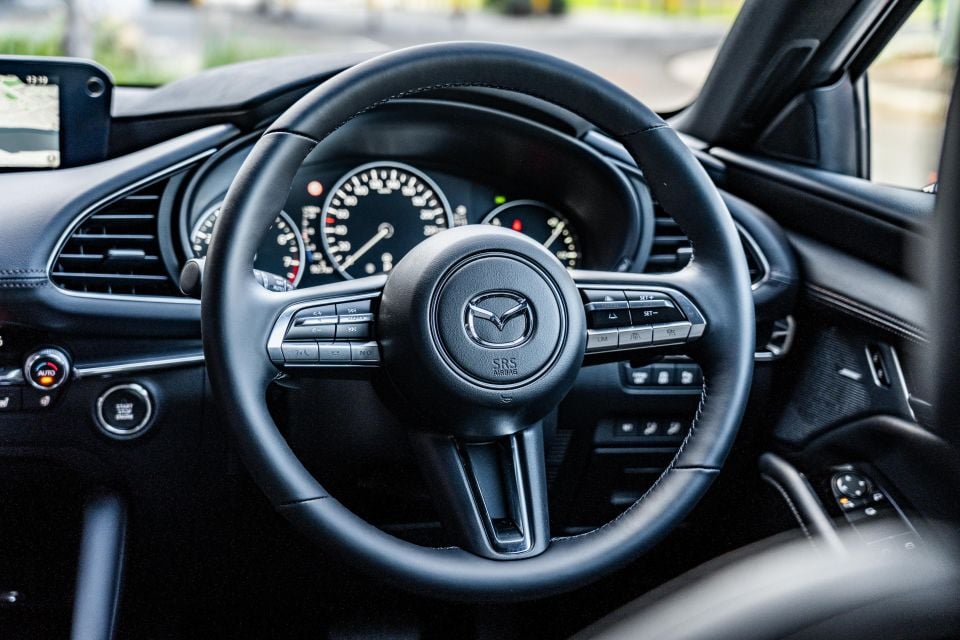

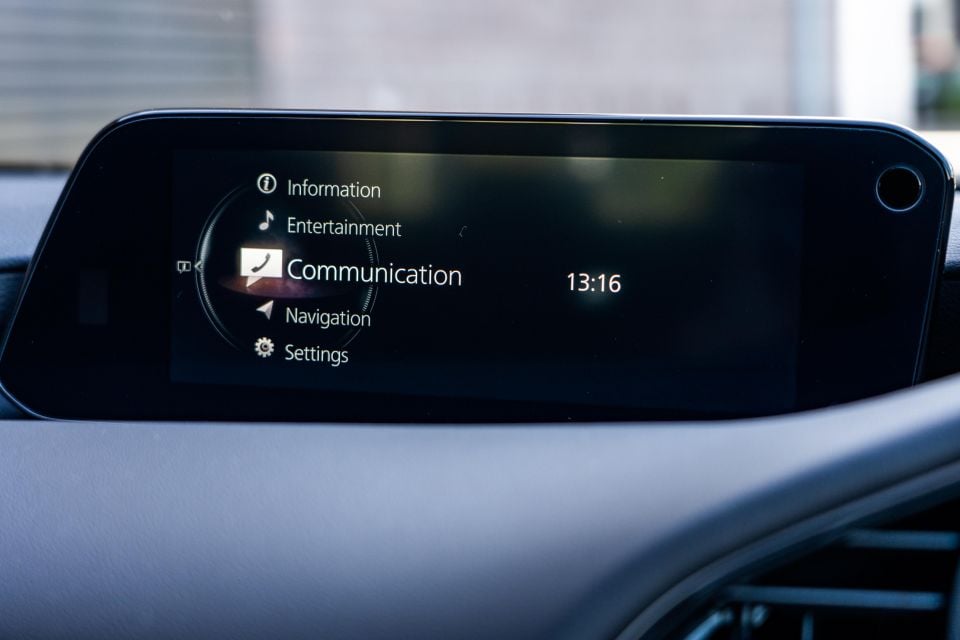
Mazda 3 X20 Astina highlights:
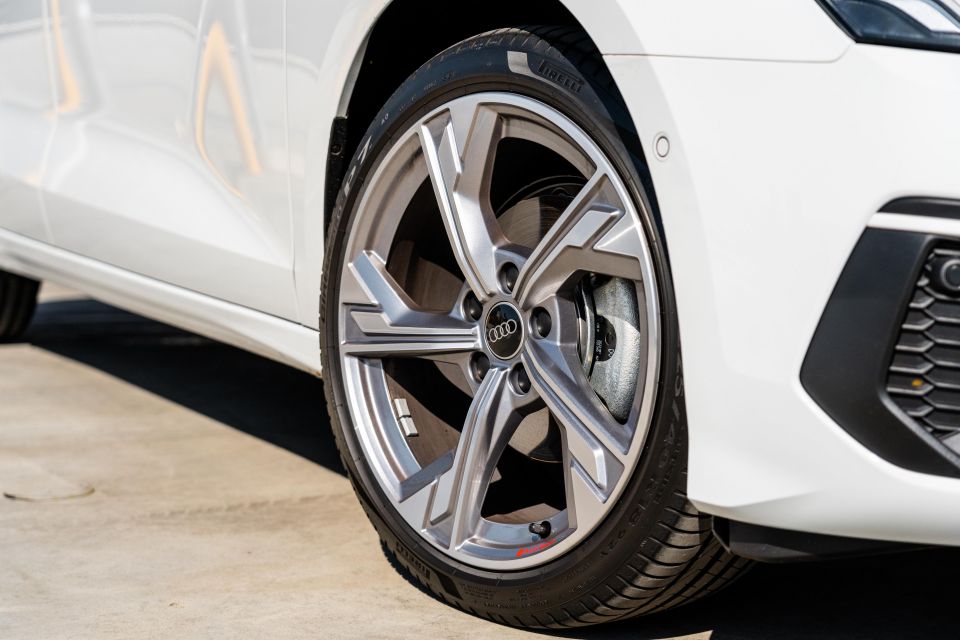
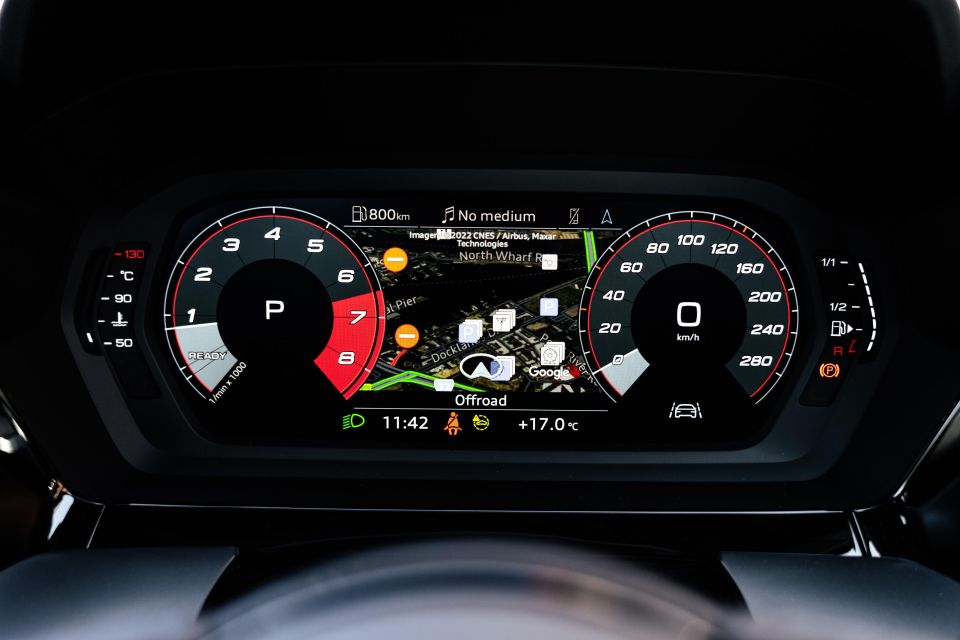
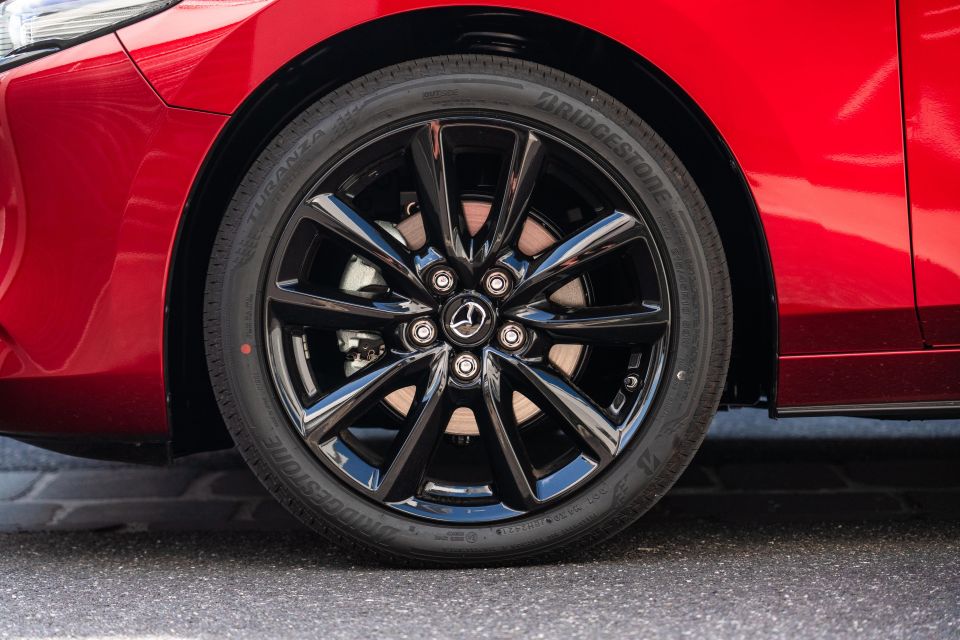
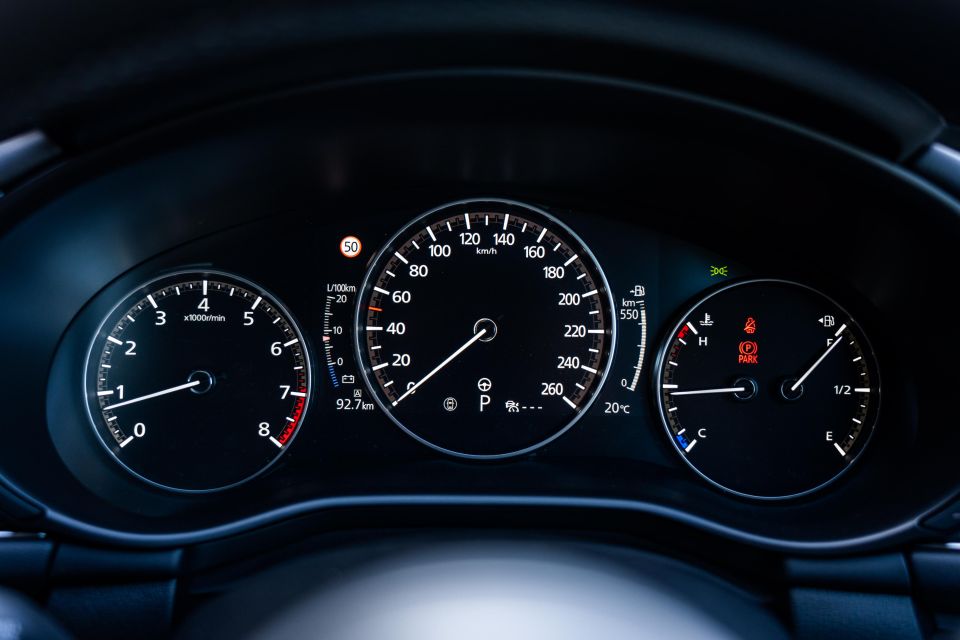
If you were to option the A3 Sportback 35 TFSI to get it as close to the 3’s Astina specification as possible, you’d need to spend around $6500 to add the Comfort package ($2600) which brings electric front seats with heating, adaptive cruise assist with stop/go as well as traffic jam assist and emergency assist, as well as auto-dimming interior and exterior mirrors.
Further, you’d need to spend $650 on privacy glass, $2000 for a sunroof (albeit a larger panoramic one), $1250 for metallic paint – the Mazda offers most metallic and pearlescent finishes free of charge. You can’t option a more premium audio system in the base A3, nor surround cameras, a head-up display, or Matrix LED headlights to match the 3’s adaptive high-beam function.
Conversely, the Mazda cannot match the Audi’s wireless smartphone mirroring, more convenient touchscreen functionality, semi-autonomous park assist, connected infotainment services nor the 10.25-inch fully digital and configurable instrument cluster display.
The Mazda wins this round fairly convincingly given the lower price of entry and higher specification.
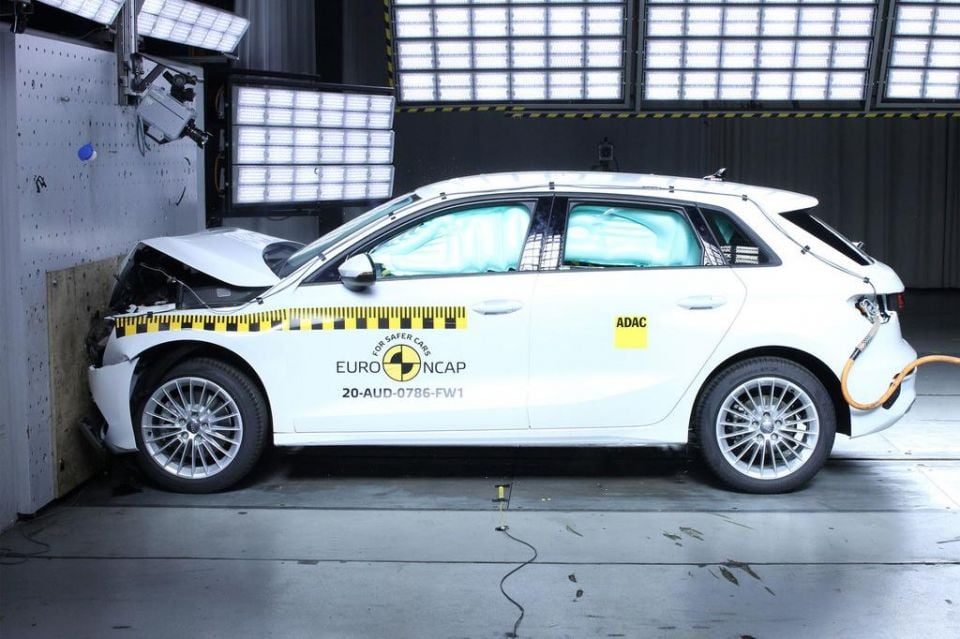
Audi A3
Front-wheel drive versions of the new Audi A3 wear a five-star ANCAP safety ratingwith2020 date stamp. The 40 TFSI quattro and S3 all-wheel drive versions remain unrated.
It scored 89 per cent for adult occupant protection, 81 per cent for child occupant protection, 68 per cent for vulnerable road users and 73 per cent for safety assist.
All versions of the Audi A3 come with:
*Currently unavailable due to component shortages
In addition to the above safety equipment, there’s dual frontal side chest and side curtain airbags as standard, as well as a front-centre airbag in line with the latest ANCAP and Euro NCAP criteria.
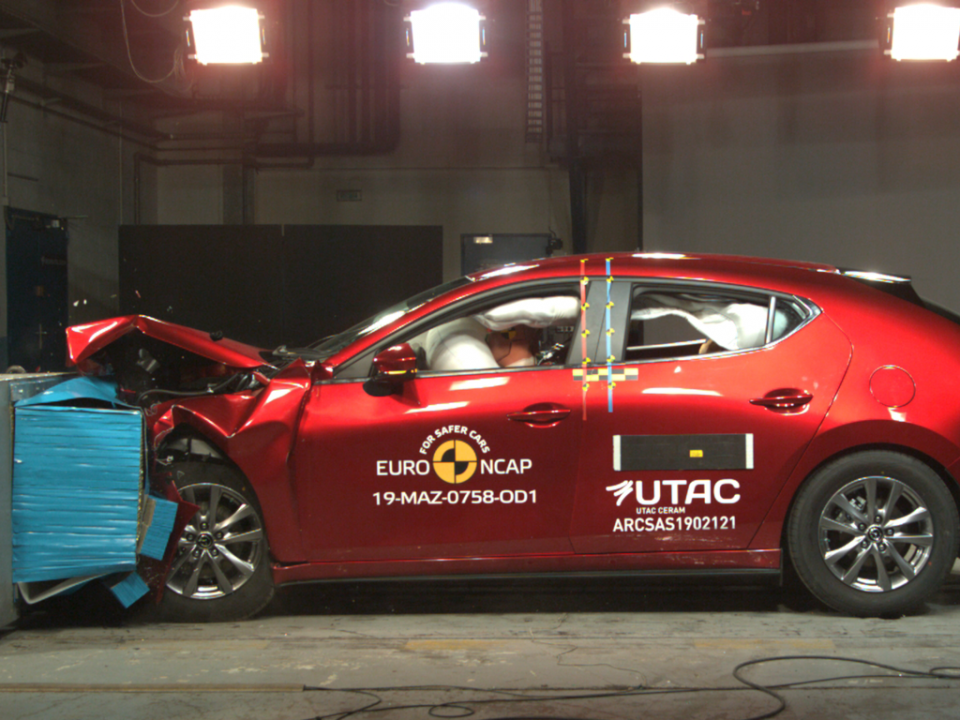
Mazda 3
The Mazda 3 has a five-star ANCAP safety rating based on 2019 testing by Euro NCAP.
It scored 98 per cent in adult occupant protection, 89 per cent in child occupant protection, 81 per cent in vulnerable road user protection, and 76 per cent in safety assist.
All Mazda 3 models come standard with:
The Vision Technology pack, standard on Astina models, adds:
The Mazda’s comprehensive standard safety suite and impressive crash test performance give it the edge here.
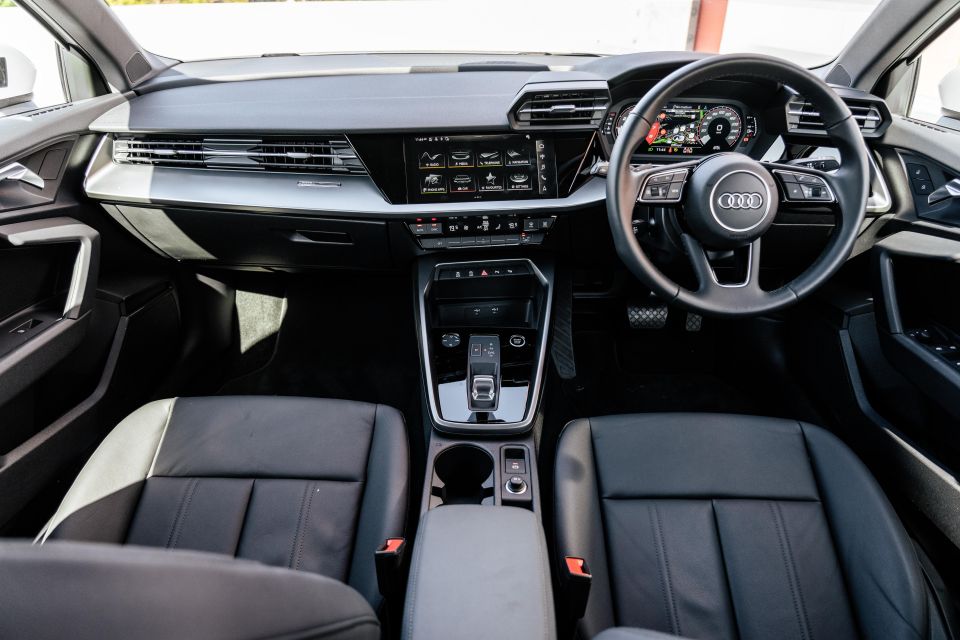
Audi A3
The previous-generation A3 was widely regarded as the benchmark for small car interiors. This new one is still nice but it probably isn’t the leader its predecessor was.
It’s something we’ve seen across most premium brands and most segments, as manufacturers pack in more features and tech.
That’s not to say the A3’s cockpit isn’t a nice place to spend time. There’s beautiful, crisp displays, sound ergonomics, and a decent mix of soft-touch materials and surfaces.
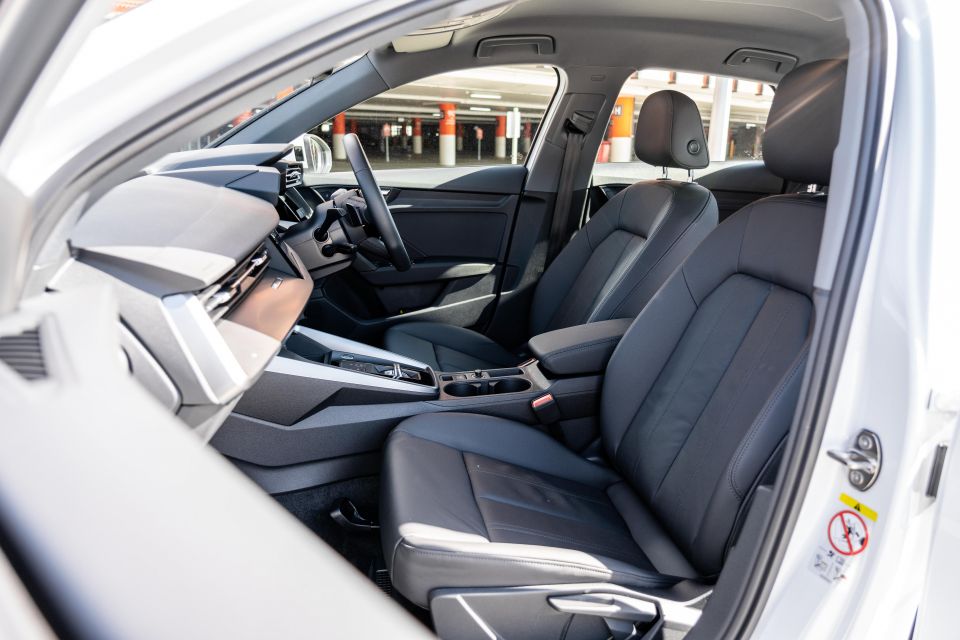
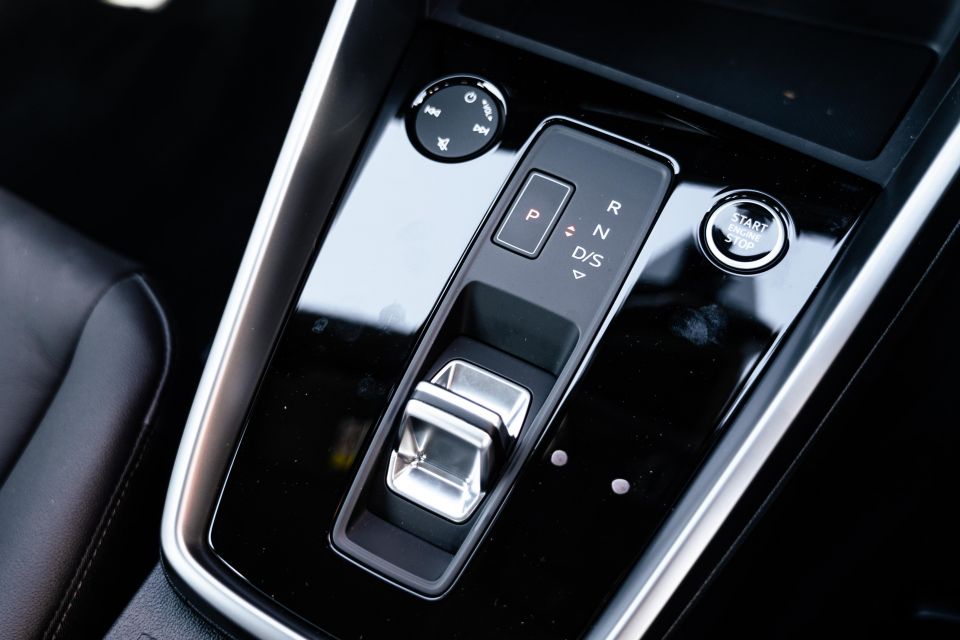
In the A3 you get standard front seats with full manual adjustment, though electric seats with power lumbar form part of the optional Comfort package.
They don’t look particularly flash – especially compared to the 40 TFSI’s Sport front seats with integrated headrests and more aggressive bolstering – but they offer good comfort and decent bolstering to go with the wide range of manual adjustment.
I did find the lack of under-thigh extendable cushion a bit annoying, given it’s a favourite feature of premium-branded European vehicles, but at 6’1 I easily found a comfortable driving position. The Mazda’s fully electric seats are noticeably more comfortable, though.
Ahead of the driver there’s a standard 10.25-inch virtual cockpit digital instrument cluster, which despite being smaller than we’ve come to expect offers the clarity and breadth of features previous iterations have been lauded for. Unfortunately, Audi doesn’t allow you to option the larger 12.3-inch virtual cockpit plus that’s fitted to the S3.


Even the smaller display offers fluid animations and snappy response, and you’re still able to flick between different central displays (e.g. maps, trip computer, audio) as well as toggling the size of the dials to either maximise the real estate for extra functions or focus on the tacho and speedo dials. It’s still the benchmark, at least for me.
The 10.1-inch MMI touch infotainment display is likewise a highlight. It’s got haptic feedback, excellent response and graphics, and offers reliable wireless Apple CarPlay which makes life super easy.
Audi has angled the display towards the driver which makes ease of use even greater, and there’s extended online functions as part of Audi connect plus – which includes online traffic information, myAudi and Google Maps destination entry, parking information, weather prompts, fuel price information and Google Services.
Further, there’s app-based functions like car finder with remote signal, remote lock/unlock, emergency call and online roadside assistance features fitted as standard. Connected and concierge services are one arena where the premium brands really set themselves apart from the mainstream players. Audi throws in a three-year subscription to Audi connect services with purchase, with a SIM card installed in the vehicle.
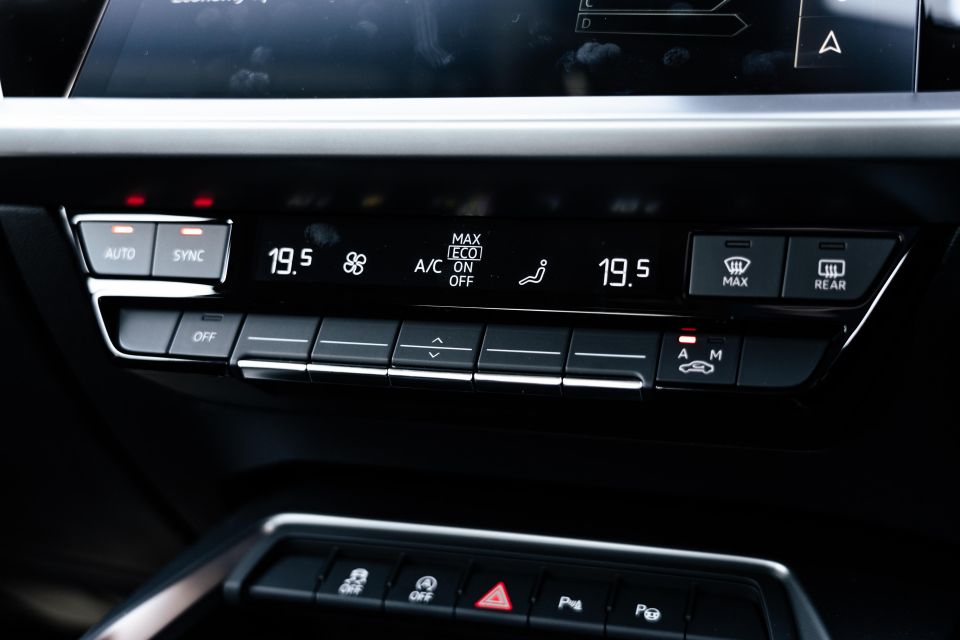
Storage is great too, with a cubby under the centre stack, another under the front-centre armrest, and deep door bins that will happily take larger bottles. Its relation to the Golf shines through here.
The move to a Porsche 911-like e-shifter for the S tronic-equipped A3 range should have translated to more space around that area also, but alas there’s just swathes of shiny gloss black trim that no doubt will scratch up 5 minutes after you drive it off the showroom floor.
It’s a shame the plastic along the centre tunnel is a bit cheap and scratchy, and there’s no lid for the cupholders or real adjustment. The space doesn’t look like much thought has been put into the presentation, which is perhaps something you might want in a $50,000 premium hatchback.
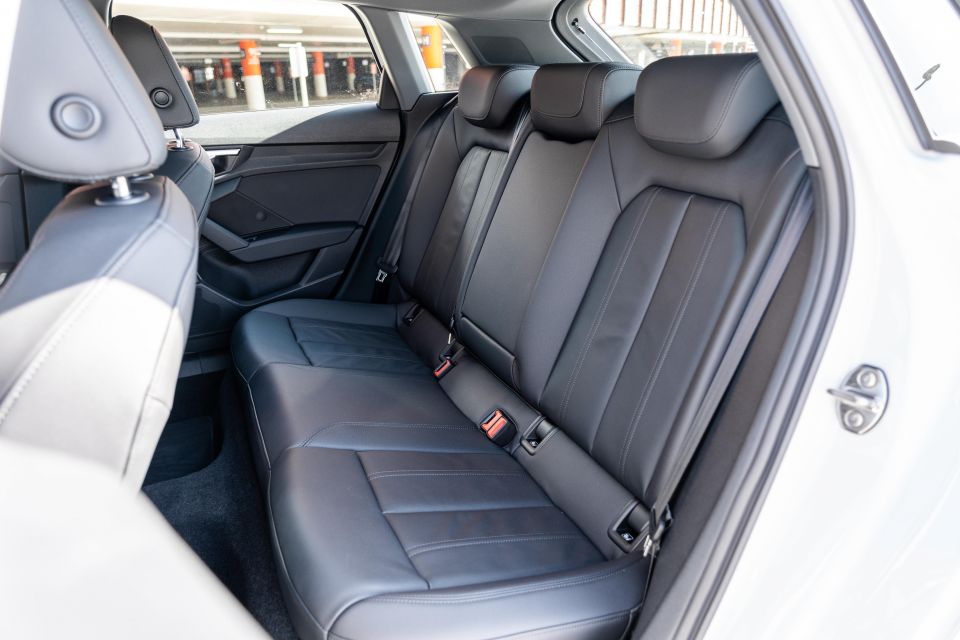
The back seat of the A3 is easily the more spacious and airy of the two vehicles here, again something that we’ve previously praised the related Golf for.
A pair of adults will fit fine back here, with good head and kneeroom for the class, as well as headroom. You could get a third in at a pinch, though we wouldn’t recommend that for a longer journey.
There’s a fold-down armrest with cupholders, bottle holders in the doors, and directional rear air vents. You also get a 12V power socket in the second row, but there’s no separate climate controls like you get in a Golf.
Kids are catered for with ISOFIX anchors on the outboard seat positions, as well as top-tether points across all three seats.
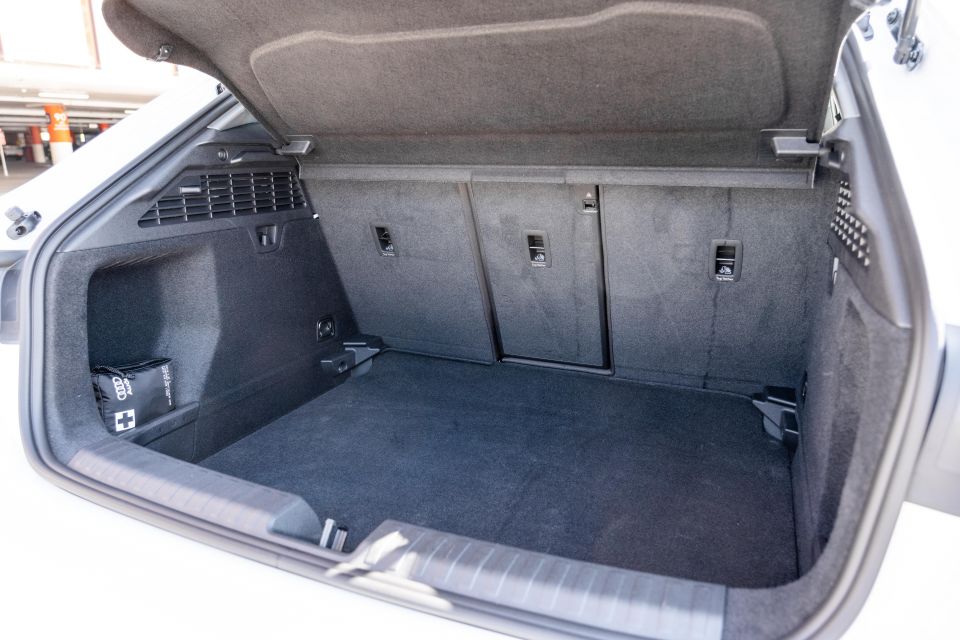
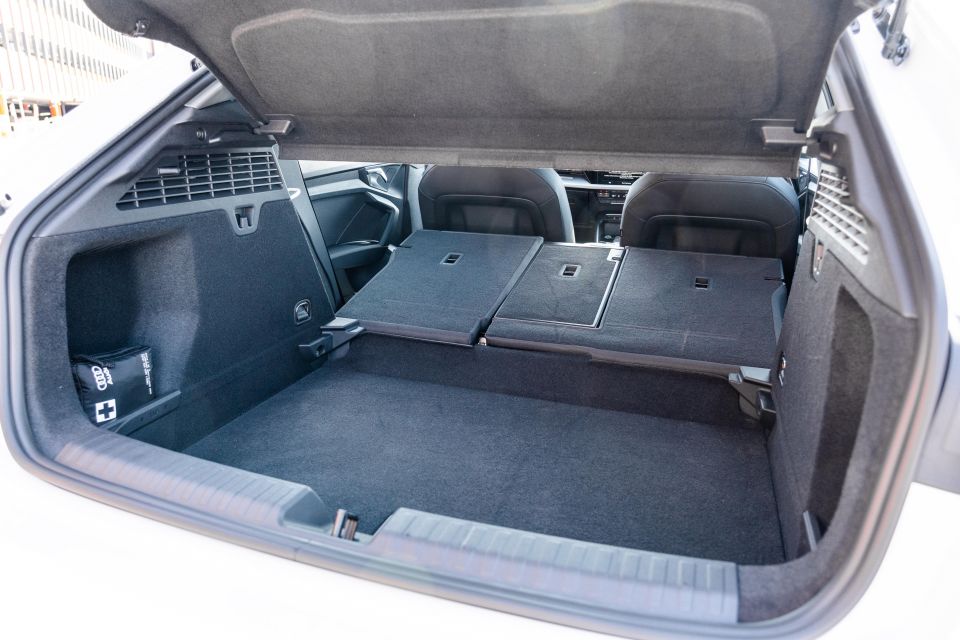
Where expert car reviews meet expert car buying – CarExpert gives you trusted advice, personalised service and real savings on your next new car.
The A3 has the Mazda 3 covered for boot space as well, with 380L quoted when five seats are in use – 85L more than its Japanese rival. Drop the rear seats and that expands to a handy 1200L.
You can use the adjustable boot floor to maximise capacity with all seats in place, as displayed above, or your can lift it up to the higher setting when the back seats are folded to create a level base for storing larger or longer items.
Further up the range, the 40 TFSI and S3 score the storage and luggage compartment package which add map pockets on the backs of the front seats, 12V sockets at the rear of the centre console and in the boot, as well as luggage compartment nets.
However, the quattro models lose capacity due to the added AWD hardware (325L/1145L).

Mazda 3
The Mazda 3 offers one of my favourite small car interiors. Period.
Like its CX-30 crossover companion, the 3’s cabin is beautifully designed and crafted, with attention to detail as well as fit and finish more than a match for premium-branded alternatives – including the Audi.
I often finding myself drawing comparisons to Lexus interiors for the 3 and CX-30, and in actual fact you can see similarities between the Mazda’s cockpit and something like a Lexus UX both in design and execution. In some ways, the Mazda is even better.
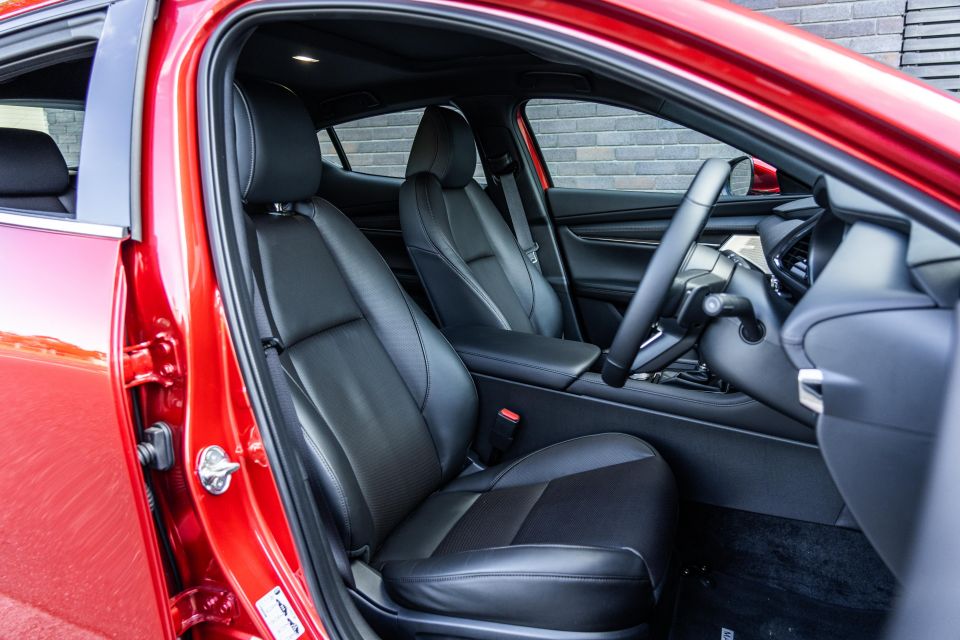

The front seats are lovely, with great all-round support and full electric adjustment. At the Mazda 3’s launch the company made a big song and dance about the ergonomic design of the seats, and while I won’t get into all the physics and engineering of it, they do feel like they support you from every angle unlike some.
All of the touchpoints are beautifully finished too, including the padded leatherette front-centre armrest and elbow rests in the doors, while the smooth leather on the lovely steering wheel and shifter are top notch.
There’s even padded and stitched leatherette sections along the centre tunnel where your knee rests, which also isn’t matched by the Audi. It may have a mainstream badge, but it’s very upmarket in here.
Storage has been well thought out, too. Cupholders are placed ahead of the shifter, complementing the cubby further up that’s more than enough to store phones, keys and wallets. The bin under the centre armrest is huge too, and the door bins fit decent sized bottles and more.
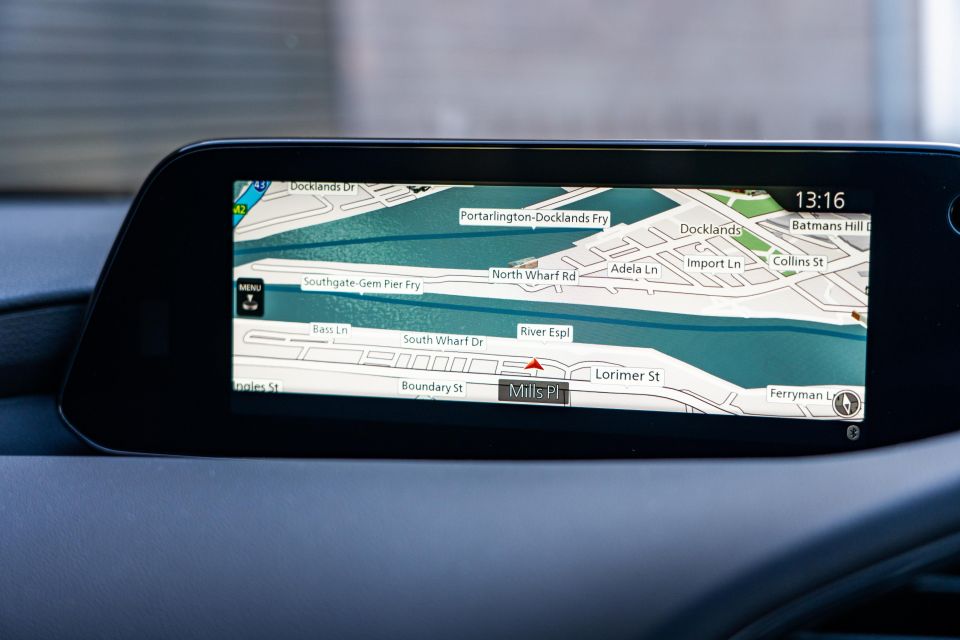

Perhaps where the Mazda loses ground to the Audi is in terms of interior displays.
While the driver’s instrument cluster with 7.0-inch virtual centre speedometer dial is clean and nice, and the 10.25-inch Mazda Connect infotainment system is a big improvement over the old MZD unit, the Mazda’s infotainment and display tech doesn’t feel quite as slick as the Audi’s.
The fonts in the instrument cluster are really nice and clean, though the map graphics and wired smartphone mirroring with no touch input functionality feel a bit behind, and hurt usability.
Mazda also lacks the extended online-based features of the Audi, like gorgeous Google mapping, live traffic updates and the like. It’s likely most buyers aren’t really looking for that stuff at this end of the market, but if you’re in the know they’re nice extras to have.
Something the Mazda does have over the Audi is a colour head-up display, which for this latest generation does away with the pop-up polariser and projects a much larger display onto the windscreen.

While the Mazda 3 Hatch’s sporty, coupe-like design makes it look really distinctive and sexy from the outside, it means the Japanese contender is compromised on the inside, particularly at the rear.
It’s quite easy to knock your head on the upper edge of the door frame as you get in, and then once you’re back there leg and knee room are quite tight, as is headroom if you’re over six-foot like myself.
Amenities in the rear are pretty good, however. There’s a fold-down centre armrest with cupholders, rear air vents, a map pocket behind the front passenger seat, bottle holders in the doors, ISOFIX anchors on the outboard positions and top-tether points across all three rear seats.
The Mazda does, though, miss out on the Audi’s rear power outlet.

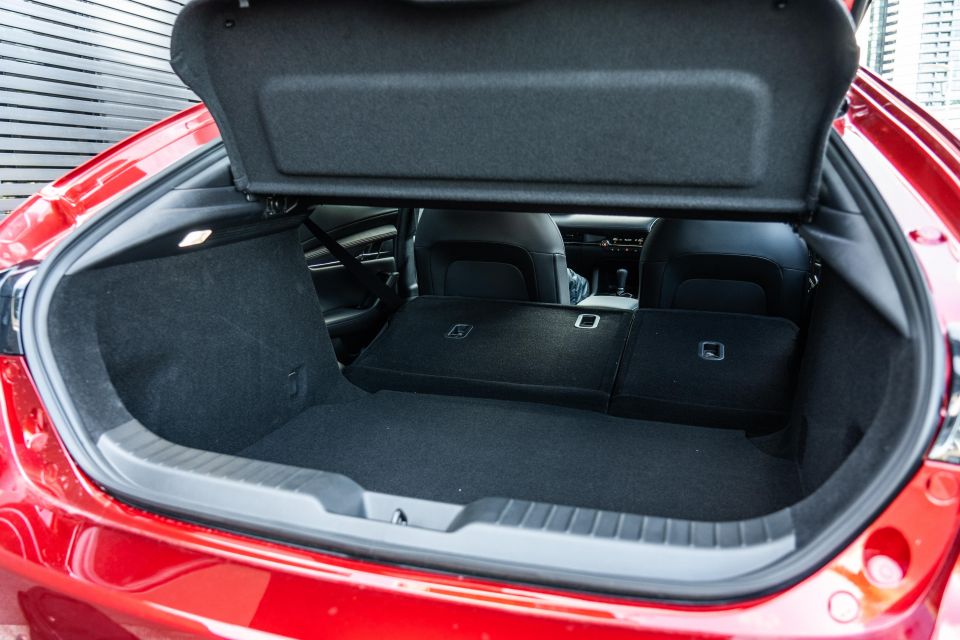
Further back, the gap between the Audi and Mazda widens again. The Mazda 3 Hatch only offers a measly 295L with the rear seats in use, which is not only the worse out of the two vehicles here, but just about the worst in class bar the Toyota Corolla Hatch (217-333L).
As demonstrated by the images above, the high floor and load lip mean the 3 isn’t the most practical small hatchback on sale, further evidenced by the lack of a luggage volume figure quoted by Mazda with the rear seats folded.
If you want more cargo capacity while staying within the Mazda line-up, the 3 Sedan offers a much more accommodating 444L, while the CX-30 crossover manages a few more cartons’ worth at 317L.
Where the Mazda majors on comfort and quality, the Audi wins for tech and practicality. Determining the outright winner for the interior category more or less comes down to what you find more important.
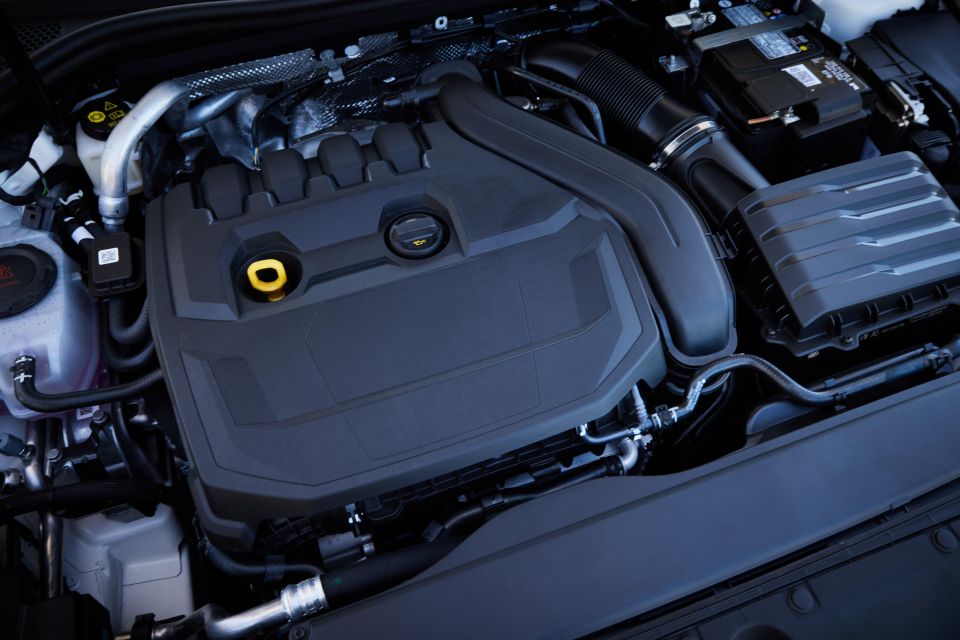
Audi A3
Under the bonnet of the A3 35 TFSI is a 1.5-litre turbocharged four-cylinder petrol engine hooked up to what Audi calls a belt alternator starter (BAS), which feeds a 48V mild-hybrid setup incorporating a small lithium-ion battery under the front passenger seat.
The petrol engine quotes outputs of 110kW (5000-6000rpm) and 250Nm (1500-3500rpm), with drive sent exclusively to the front wheels through a seven-speed S tronic dual-clutch transmission.
It’s the first time the 48V version of the 1.5 TFSI engine is being offered in the Australian market across the Volkswagen Group. It’s meant to offer equivalent performance to the previous A3’s 1.4-litre turbo petrol engine (0-100 in 8.4s) while offering a fuel consumption advantage of “up to 0.4L/100km” in official testing.
Efficiency is rated at 5.0L/100km for the A3 Sportback 35 TFSI (4.9L/100km for the Sedan). With a standard 50-litre fuel tank, that means a theoretical driving range of 1000 kilometres per tank.
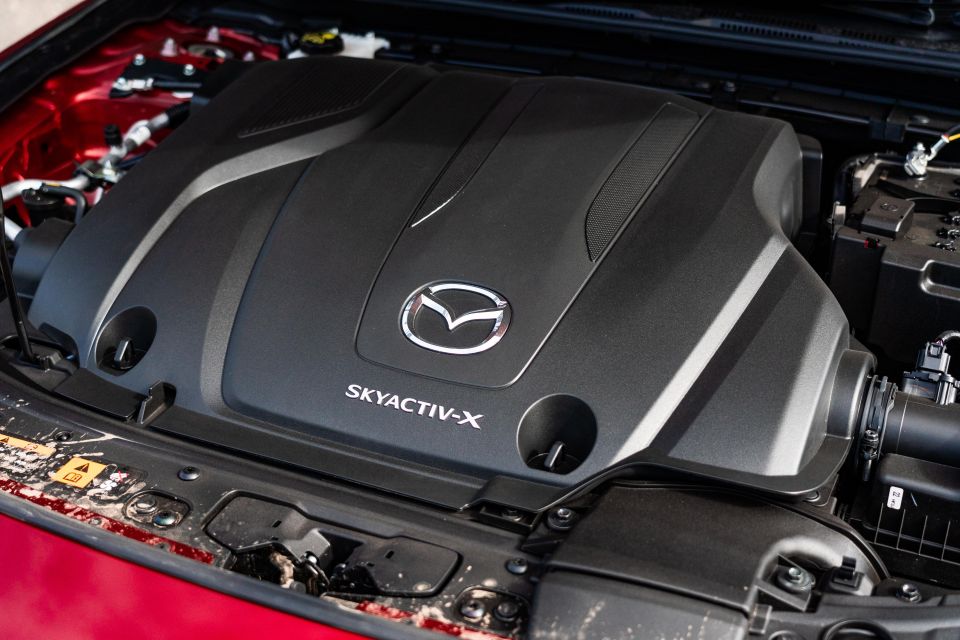
Mazda 3
Under the bonnet of the Mazda tested here is the much-hyped 2.0-litre four-cylinder petrol engine with Skyactiv X technology – it features spark-controlled compression ignition similar to a diesel engine for a leaner fuel-air mix designed to deliver the economy of a diesel with the performance and driveability of a conventional petrol.
There’s also a small supercharger as well as Mazda’s M Hybrid 24V mild-hybrid technology, incorporating an integrated starter generator and compact lithium-ion battery which powers electric systems in the vehicle and also “assists the engine under acceleration”.
Outputs are quoted at 132kW (6000rpm) and 224Nm (3000rpm), which represents an 18kW/24Nm improvement over the G20 2.0-litre petrol engine available lower down in the Mazda 3 range, though 6kW and 28Nm down on the more affordable G25 2.5-litre unit. It’s also 22kW gruntier than its Audi rival, though down 26Nm.
However, the X20 e-Skyactiv X engine offers peak torque 1000rpm earlier than other Mazda 3 petrol engines, and claims to use a miserly 5.5L/100km on the combined cycle. The fuel tank measures 51L.
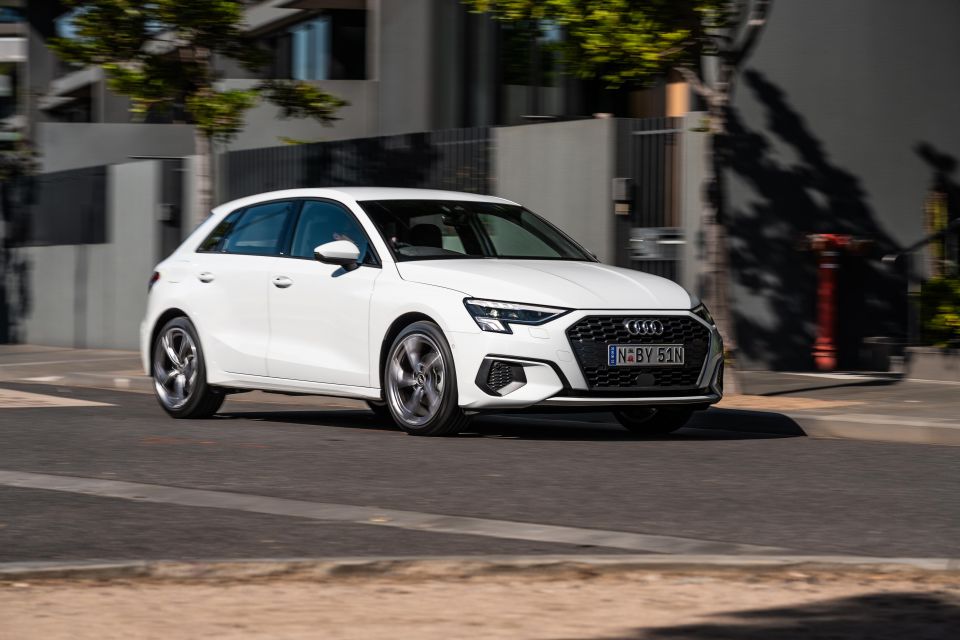
Audi A3
The A3 rides on the proven Volkswagen Group MQB architecture, which in this latest generation of product has been refined even further. It’s already excellent in the related Mk8 Golf, but how about with a more expensive badge?
Well, as we found on the Australian media launch drive, the A3 is a comfortable, mature vehicle to drive and feels very much like a shrunken luxury car – though it’s not perfect.
Performance from the 1.5 TFSI mild-hybrid is surprisingly good despite the smaller displacement and fairly uninspiring 110kW/250Nm outputs. Peak torque is on tap from just above idle and the A3 loves to effortlessly glide along with city traffic or cruise on the freeway.
Having seven speeds is quite helpful at 100km/h and above, with the engine ticking over just about 2000rpm silently whirring away in the background, and has a nice tone to it under acceleration.
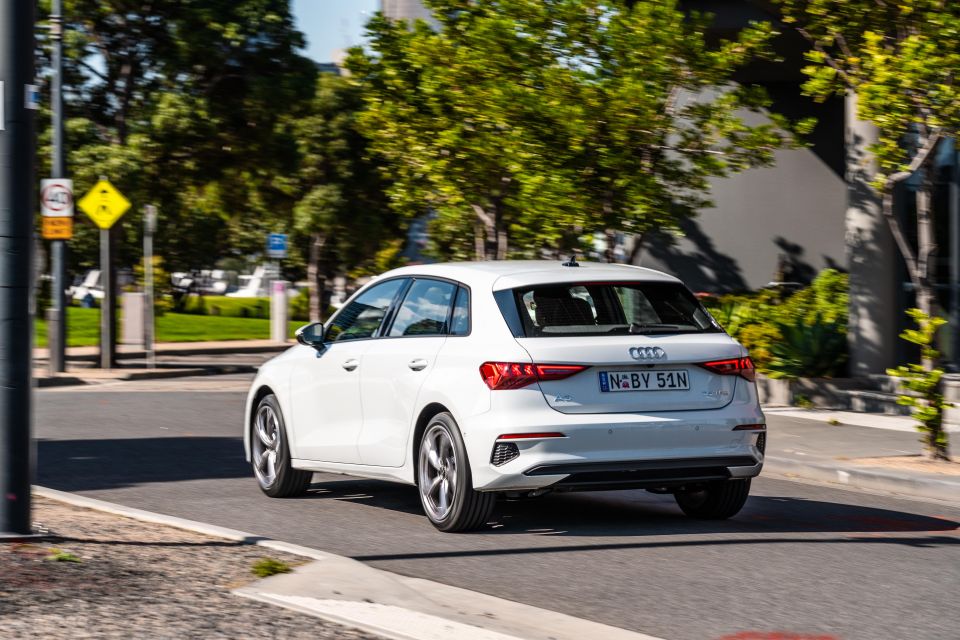
I will note that the S tronic dual-clutch auto isn’t completely devoid of low-speed hesitation or the occasional lazy downshift given the 35 TFSI has been tuned for optimal efficiency, but there’s an impressive depth and finesse to the Audi’s abilities that make me hope other brands in the local VW Group stable can get their hands on this powertrain for other nameplates like the Golf, Tiguan, Octavia and so on.
The 48V mild-hybrid setup is easily one of the best I’ve used, both from Audi’s line-up and across the industry, as it always seems to know when you want it to be on/off. It decouples the engine and transmission and shuts off the petrol motor when coasting for a lovely coasting experience, and quickly fires the engine back up when you touch the brake or the accelerator.
We even found it likes to creep in traffic with your foot on and off the brake, though it can’t drive the wheels with an electric motor like a Toyota Corolla Hybrid. Audi says the A3’s sensors can pick up the vehicle’s environment to determine when the best time to switch the engine on or off, as well as the coasting functions. It’s very impressive.
Further, it will amp up the regenerative braking when a vehicle in front is slowing down to rely less on the actual brakes, and I would imagine if fitted with the optional adaptive cruise assist function, you could leave the A3 pretty much to its own devices in traffic jams and reduce your fuel use and emissions quite easily in the process.
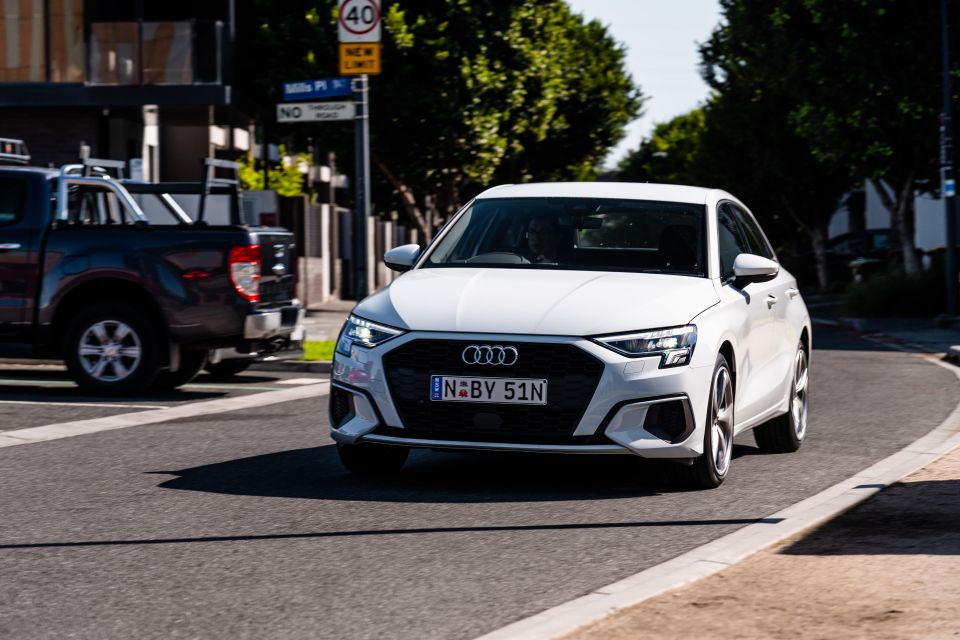
Long story short, this feels like how 24V or 48V mild-hybrid systems should feel like.
Beyond that, the A3 offers light yet accurate steering, a pliant ride that errs on the firmer side of things for a mildly sporty but balanced feel, with a nice fluidity to all the driver controls overall.
My main complaint is the tyre roar on anything but perfect asphalt, something we tend to complain about in entry-level premium European offerings.
It’s actually surprising how echoey the A3 we had on test was in the cabin, though it was riding on optional 19-inch wheels and Pirelli sports tyres which likely contributed to the noise. Considering how refined the new Volkswagen Golf is, it’s disappointing the Audi-badged version is somewhat less refined in terms of noise suppression.

Mazda 3
The current Mazda 3 has long been a favourite small car of mine as well as my colleagues. It’s an impressive vehicle all round that genuinely offers premium vehicle dynamics and refinement.
From the moment you set off the Mazda’s fluid steering and nicely damped ride give you the impression a lot of work has gone into making the 3 feel a cut above the mainstream set, even if it’s using a less sophisticated torsion beam rear suspension system as opposed to the Audi’s multilink rear.
It’s my first real stint with the Skyactiv X motor in the Mazda 3 – though I have tried it in the CX-30 crossover – and I feel it’s much better suited to this rather than its all-wheel driven, crossover-bodied sibling.
Performance is revvy and eager, and there’s not too much engine noise permeating the cabin at any given time, though Mazda’s typical high-pitched engine note and free-revving nature may not be to everyone’s tastes.
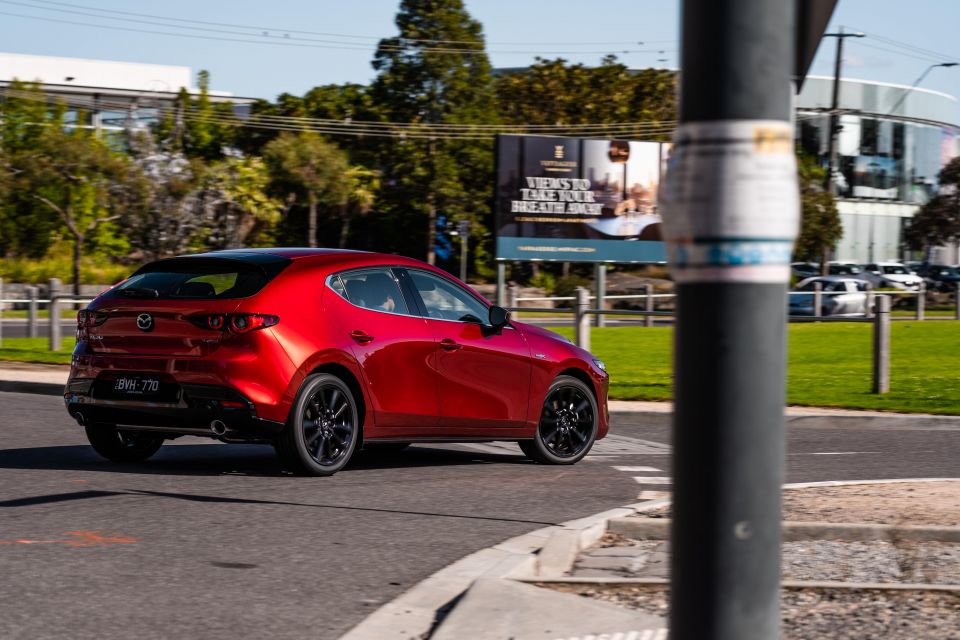
It doesn’t feel noticeably off the pace compared to the G25 2.5-litre petrol also available with the Astina trim level, which is something to be said given it’s forfeiting 500cc of displacement to the older engine.
The help of compression-ignition combustion technology, a small supercharger and very mild assistance from the 24V electrical system means peak power and torque come online earlier than both the G20 and G25 versions of Mazda 3, though it’s not quite as refined or effortless as the turbocharged Audi.
You feel a lot less of the electrified bits in the Mazda too, with the 3’s M Hybrid system unable to decouple the engine and transmission when coasting, and the idle stop/start system didn’t always feel that much different to a standard Mazda. Meanwhile, the Audi can be sitting there with the engine off for minutes.
That no doubt contributed to the Mazda’s higher fuel use on test, which generally was around 1.0L/100km worse off when used in equivalent conditions to the A3.
At speed the Mazda is better insulated from road and wind noise than the Audi. It’s already a benchmark in the mainstream segment and it’s more than a match for the Audi as well as other compact Germans.
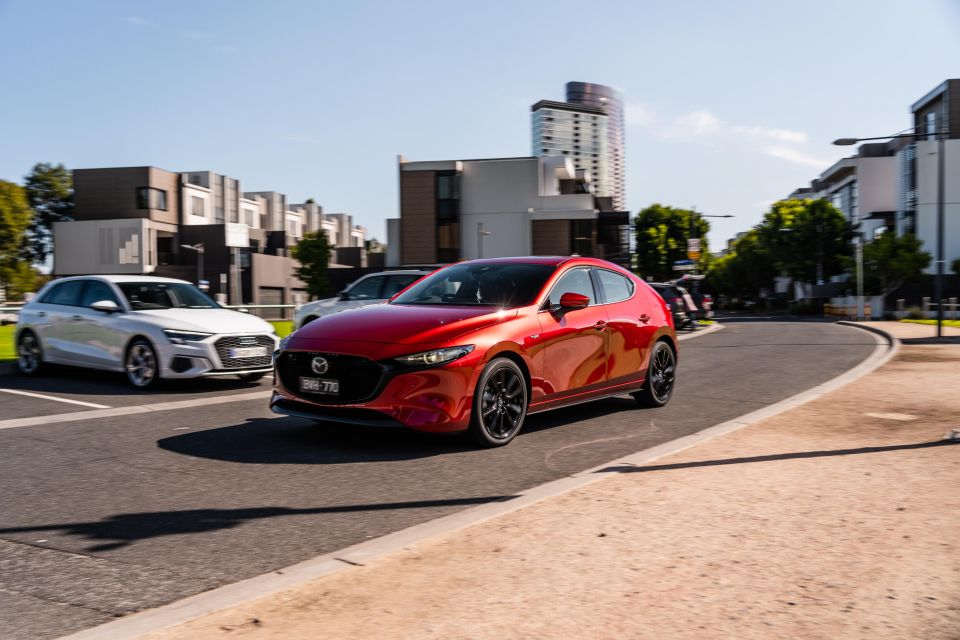
The 3 also has more driver assistance systems built in as standard, something you have to pay more for in the A3. Adaptive cruise control with Cruising and Traffic Support makes for semi-autonomous highway driving, and having stuff like surround cameras, front cross-traffic alert and parking sensors all round make this feel top shelf.
In my experience with Audis equipped with adaptive cruise assist as well as my own Volkswagen Golf GTI, however, Mazda’s systems can often be a little conservative or trigger-happy, at least when it comes to the adaptive cruise control leaving bigger gaps than it needs to and slowing down whenever a vehicle enters your lane ahead irrespective of the distance, as well as the blind-spot monitoring constantly binging and bonging.
The Mazda’s outward visibility is also a sore point, particularly in the hatch. The small windows and thick C-pillars make this almost coupe-like to see out of. Luckily the Astina grade packs in surround cameras and sensors.
On the road, the Audi pips the Mazda thanks to its more mature manners and more efficient mild-hybrid system.
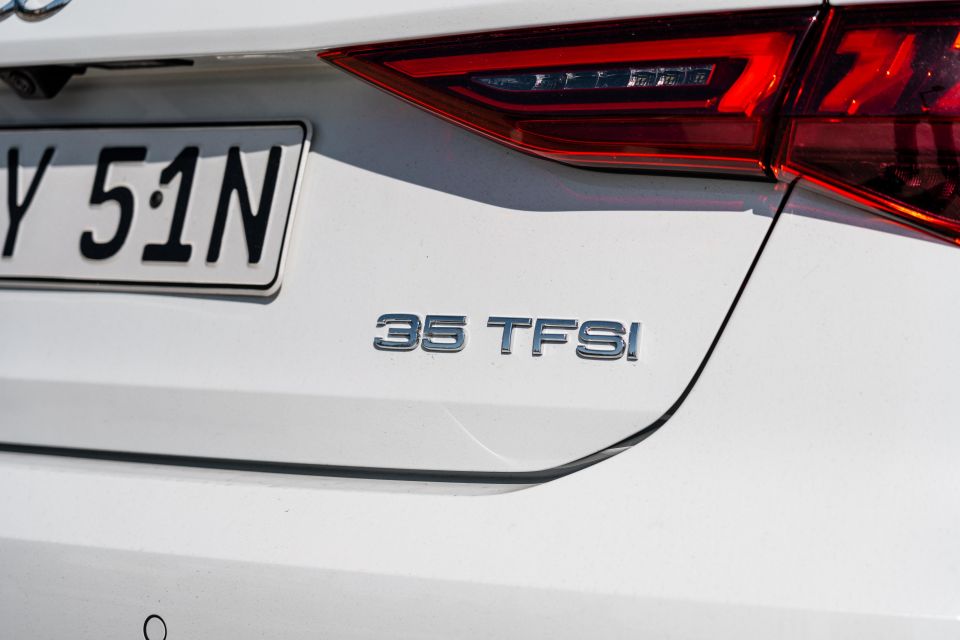
Audi A3
Audi no longer lags behind the mainstream brands in the warranty department.
The A3 is covered by a five-year, unlimited-kilometre warranty from January 1, 2022. Audi also offers complimentary 24/7 roadside assistance for the duration of the new car warranty program.
Scheduled maintenance is required every 12 months or 15,000 kilometres, whichever comes first.

Buyers can buy upfront Genuine Care Service Plans which cover up to the first five years or 75,000km of maintenance, which in the case of the A3 35 TFSI and 40 TFSI quattro costs $2250 – an average of $450 per annum and even more surprisingly, less than what parent Volkswagen charges to service a Golf for five years ($2400).
As for fuel consumption, the Audi tends to be the more efficient of the two. We saw high fives with mixed driving which climbed into the low sevens with more urban stints and shorter trips.
In our launch review we saw it get very close to its 5.0L/100km combined claim, which is bordering on Toyota Hybrid levels of efficiency. Impressive.
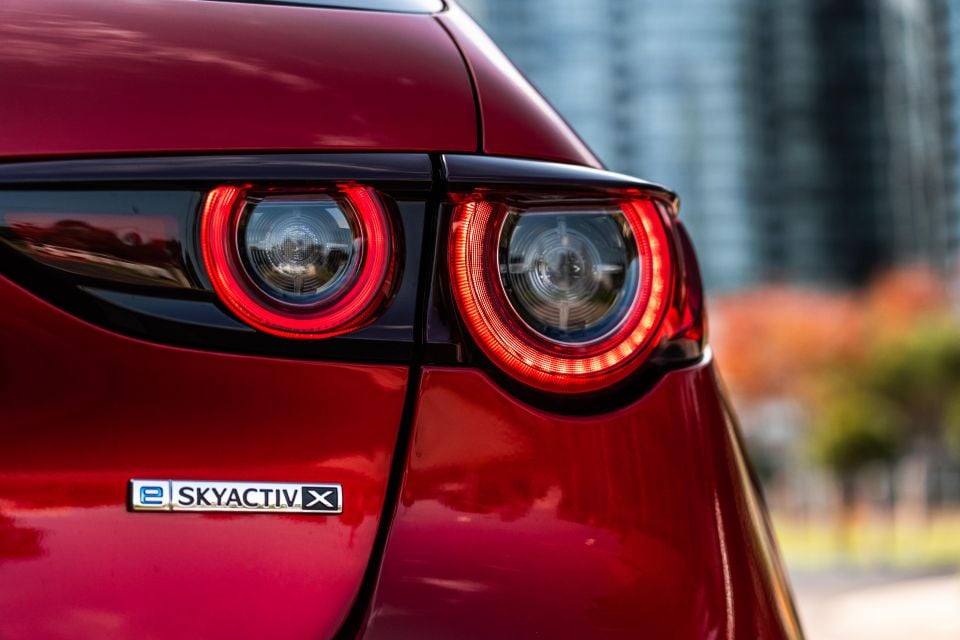
Mazda 3
Like the Audi, the Mazda 3 is covered by a five-year, unlimited-kilometre warranty, with premium roadside assistance also thrown in for the first five years after purchase.
All versions of the Mazda 3 demand maintenance every 12 months or 10,000km – something to consider if you do high yearly mileage.
The first five visits will cost $359, $389, $359, $389 and $359 – totalling $1855 for the first five years or 50,000km.
It’s worth noting, however, that there are some extra-cost items not included in the base service pricing. For example, Mazda will charge you $88 every 40,000km or two years to change the brake fluid, and $104 every 40,000 kilometres to replace the cabin air filter.
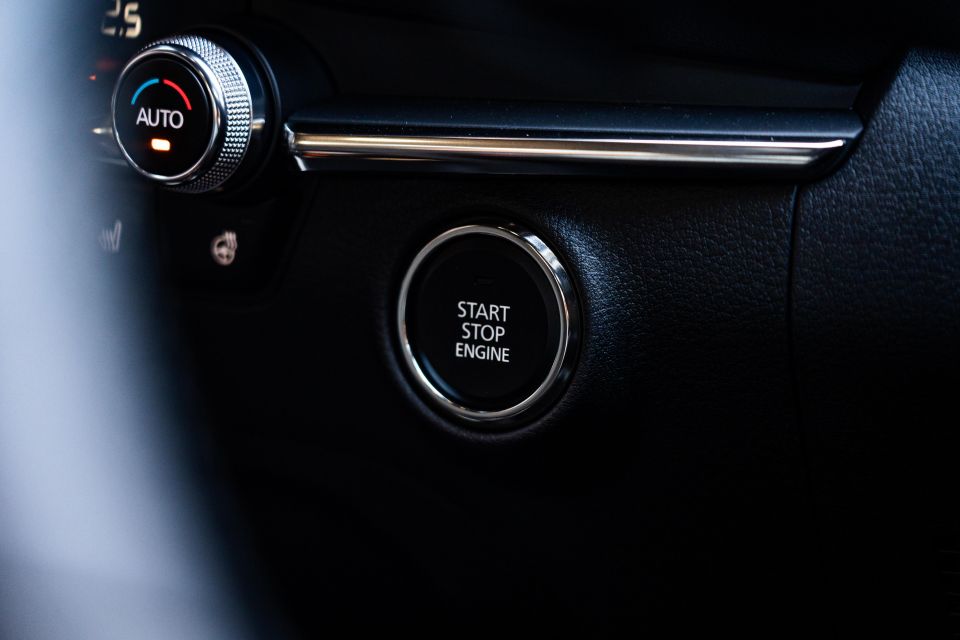
That would bump the overall cost over five years to $2135 which puts the Mazda within $100 of the Audi.
Real-world fuel consumption wasn’t as frugal as we would have liked, with the Mazda’s M Hybrid extended stop/start function unable to get the indicated figure below 7L/100km in mixed driving with plenty of stop/start city traffic. It did, in fairness, drop to 6.6L/100km with an extended round trip to Phillip Island. Note Mazda’s claim is 5.5L/100km.
I noticed the M Hybrid setup had limited range of ability compared to the Audi, only shutting off the engine from 20km/h as you come to a stop in only the most ideal conditions, and unable to keep the engine off at the lights for longer than 45-60 seconds, which left it idling at longer red light cycles.
Considering how much Mazda charges for the privilege, the e-Skyactiv X powertrain only saves a little over 1L/100km or so compared to the more powerful but cheaper G25 powertrain available in the Astina grade.
The Mazda is cheaper to service, but the Audi is more frugal. Who wins here depends on what you consider more important.
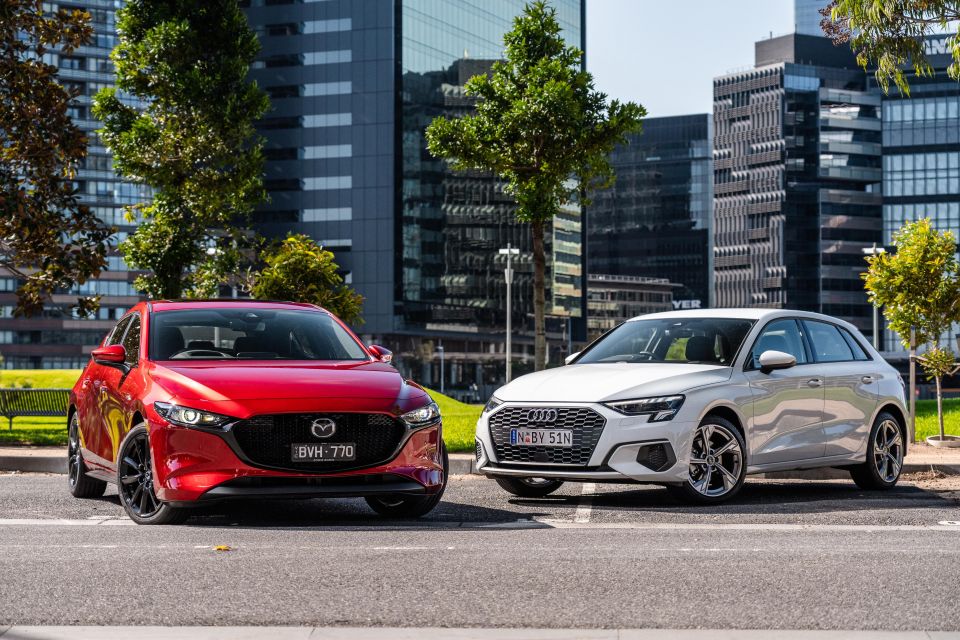
Personally, I don’t feel there’s a loser in this comparison, both vehicles are objectively very good and cater to opposite ends of the buyer needs spectrum particularly when it comes to what you define as premium.
The Mazda 3 X20 Astina showcases the full extent of the Japanese brand’s push upmarket. It is beautifully made, offers just about every safety and convenience feature you can think of, and in our tester’s Soul Red Crystal metallic paint it will definitely turn heads – for better or for worse.
It’s no loser on the road, either. The 2.0-litre e-Skyactiv X motor may not quite live up to the brand’s hype, but it shows potential in Mazda’s future smaller-engined products. I’d probably take the cheaper G25 motor for the cost saving and better performance, though.
Then there’s the Audi. Typically Germanic in that it’s clean, elegant, if a little bit plain.


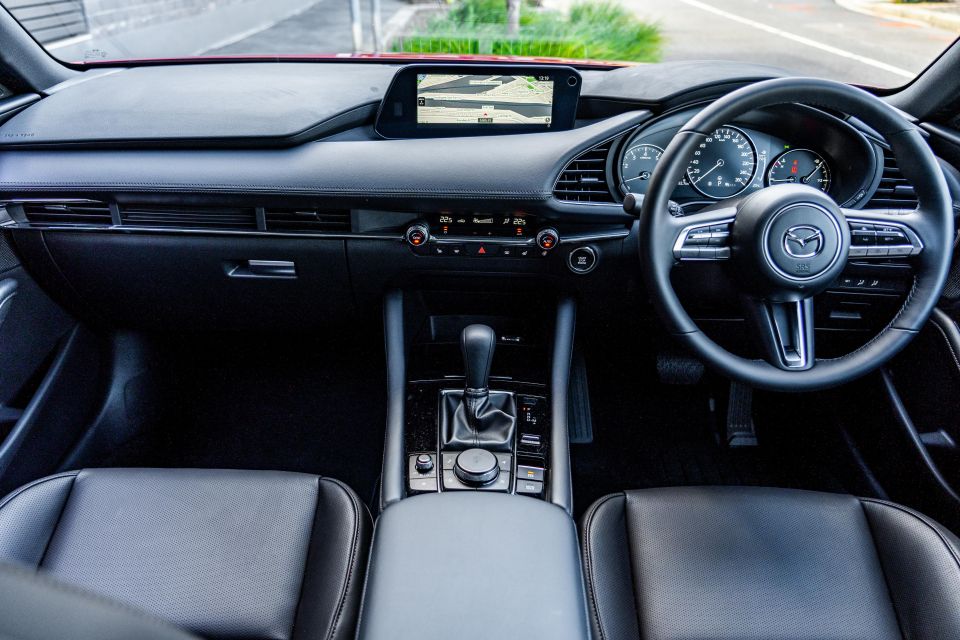
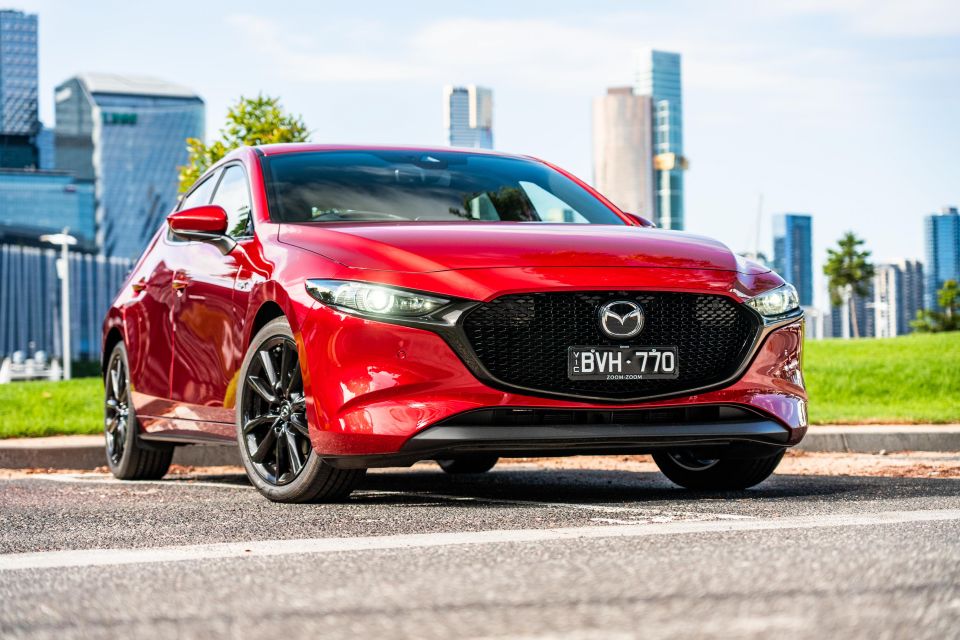
Its much more sophisticated 48V MHEV system is genuinely impressive, in the way that it smartly turns the engine off as much as it can without really impacting the drive experience by having laggy response or being clunky as it re-couples the driveline after coasting.
Compared to the Mazda, it offers better in-car tech – those displays are to die for – and there’s a beautiful cohesion to the cabin design and ergonomics – everything just works and is located where you’d expect it to be. It’s also significantly more practical if you’re planning to cart people around or fill the boot up with luggage, or both.
Despite being the entry-level engine variant the 35 TFSI drivetrain isn’t out of its depth on the open road, either. Being developed for comfortable cruising on the autobahn anywhere between 140 and 200km/h, the A3 is typically European (and Volkswagen Group in general) in that it’s as comfortable at 110km/h as it is putting around the city – if only road noise was a little more subdued.
If it were my money, I’d be pretty conflicted. The Mazda is excellent value relatively, and looks and feels more expensive than it is.
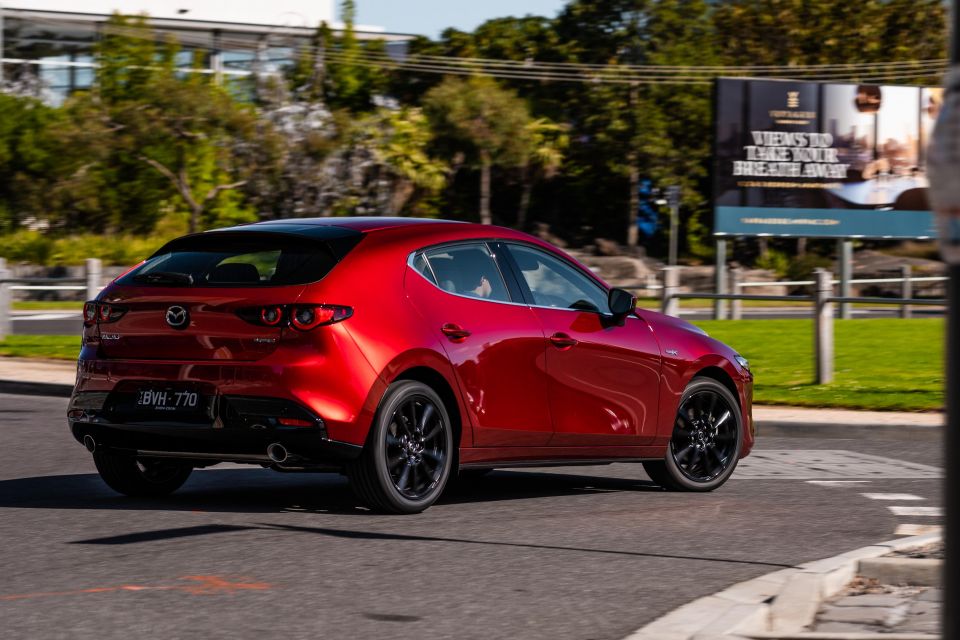

Meanwhile, the A3 is an affordable ticket into premium motoring, and the standard specification these days means you don’t feel like you’re only paying for a badge. That said, you’ll be spending at least $10,000 more to get the A3 to the Mazda 3 Astina’s level of specification.
Should money be no real object, the A3 with the Comfort package and a sunroof as well as a well-considered colour and trim combo will feel much more luxurious, though at that point you’re looking at over $50,000 before on-roads. It’s also the pick between these two if you regularly use the rear seats and want decent boot space.
The Mazda, meanwhile, is better served with the G25 2.5-litre powertrain in the scheme of things. It’s no doubt the better value vehicle here, and despite the lower price of entry and higher level of kit, Mazda has gone all out in the materials and finish so that it feels every bit as expensive as the Audi. Its on-road manners are also competitive, and it’s the more refined vehicle at speed.
Personally, the Audi’s characteristics are more in line with my tastes, but the Mazda is the better buy.

Click the images for the full gallery
MORE: Everything Audi A3 MORE: Everything Mazda 3
Share your thoughts with us in the comments below!
James Wong is an automotive journalist and former PR consultant, recognised among Australia’s most prolific motoring writers.
Share your thoughts and write a review of a car you own and get featured on CarExpert.


William Stopford
5 Minutes Ago


Max Davies
35 Minutes Ago


Derek Fung
2 Hours Ago


Matt Campbell
8 Hours Ago


Ben Zachariah
1 Day Ago


Damion Smy
1 Day Ago